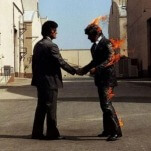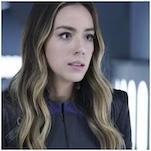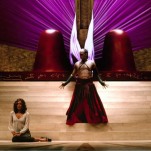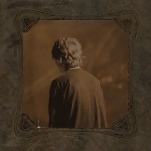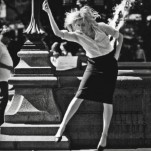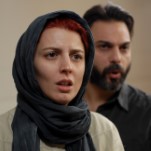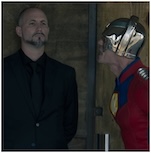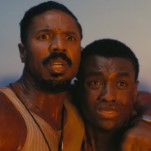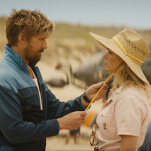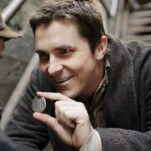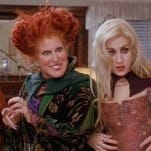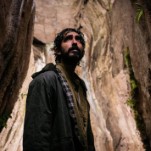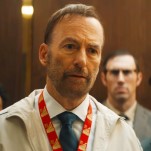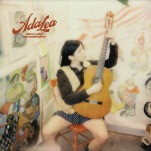Geoff Johns, Gary Frank Explain Bruce Wayne’s Detective Origins in Batman: Earth One Vol. 2
Maybe “dark,” “gritty” and “realistic” don’t signal fresh material when advertising a Batman tale, but writer Geoff Johns and artist Gary Frank’s Batman: Earth One went a different route. The murky backgrounds are still there, and Frank’s version of Batman’s eyeballs, exposed completely under the black mask, shows that Earth One leans on realism. But most importantly, like with every other continuity-shucking Earth One installment, the graphic novel forced comic readers to take on entirely different relationships with well-known characters. Through Batman’s opening volume, we saw Bruce Wayne evolve—and not immediately into the cape-clad hero we know today—but into a budding street fighter with skills left to hone. Readers saw growth in his relationship with Alfred, who fills the butler role only in title. Alfred, after all, is Bruce’s main coach on the streets of Gotham.
 This week, Johns and Frank returned with Earth One: Volume Two, a second graphic novel installment that forces readers to question their assumptions about a few Gothamites whose books we’d already closed. The Riddler poses huge questions about Bruce Wayne’s identity. Killer Croc has a surprisingly emotional progression. Harvey Dent has a new twin sister, Jessica—and maybe you can already guess how that works within the book. Maybe most importantly, we see a budding Batman take on a new role: Detective.
This week, Johns and Frank returned with Earth One: Volume Two, a second graphic novel installment that forces readers to question their assumptions about a few Gothamites whose books we’d already closed. The Riddler poses huge questions about Bruce Wayne’s identity. Killer Croc has a surprisingly emotional progression. Harvey Dent has a new twin sister, Jessica—and maybe you can already guess how that works within the book. Maybe most importantly, we see a budding Batman take on a new role: Detective.
We spoke with Johns and Frank about expanding Earth One, Bruce Wayne’s emotional connection with Gotham’s residents and how important humor is in the Earth One series.
![]()
Paste: The first volume of Earth One was about reexamining the relationships we had with Gotham’s characters, and we see an expanded cast for the second volume. Was it a challenge to keep that theme going as the cast grew?
Johns: No. Expanding the cast, if anything, was liberating and exciting. It was exciting to work with Jessica [Dent], Harvey Dent, Killer Croc and The Riddler. It was actually fun to continue to explore our takes on Bruce, Alfred and Harvey. That wasn’t the challenging part, I don’t think. It’s a different type of storytelling. We’re telling this massive Batman arc in massive novel chapters. It’s almost cinematic, and we’re trying to really dig down into these characters in new way. That’s the challenging part. Taking a different look at these characters while staying true to who they are. It’s a very different take on Riddler, Dent. Jessica Dent [Harvey’s twin sister] is a completely new character. But there are aspects of it, even the bat signal. We have a completely new bat signal in volume two, and even the start of some of the features of bat mythology. I think if we explore Batman, we want to explore it in a way where we say something about these characters that hasn’t been said, or look at them in a way that hasn’t been done before, all while remaining true to the Batman mythos.
Paste: Does that cinematic approach make a second Earth One installment a more daunting task from the beginning, as opposed to monthly installments?
Johns: It’s actually a little more rewarding. We can do story arcs and character arcs that are a little more subtle. If you saw that Harvey/Jim Gordon scene in the book, that’d be all you get in a monthly book. It’s not the same experience. You have months and months to wait to see where that goes. The time between that takes away, for me, too much emotional resonance. The fact that you can see things like that play through all at once, in one sitting, that’s really rewarding. We can’t do that stuff in monthly books. It’s daunting in a way, but it’s exhilarating to be able to tell this story, to take the time it takes. It’s going to come out when we think it’s great. It’s not going to be on any schedule other than what it takes to produce a really great graphic novel.
Paste: One of the most significant developing relationships was Batman and Gordon’s. With a book that’s made to look at these relationships in different ways, what elements were important to keep in tact?
Johns: That they’re allies, and that they’re allies in a city where there’s a reason that Bruce and Jim work together. That there’s not a whole team of cops around Batman, or a whole team of vigilantes who work with Gordon. These two connect on a level that others don’t. They trust each other, and I wanted to forge this mentor relationship with Bruce, both with Jim and Alfred. But by pushing Jim and Alfred apart, by giving them each their own distinct point of view, I liked having Bruce caught between these two mentors. Having both of them helps Bruce make his own decisions. Alfred and Jim Gordon, if they’re on the same page, they serve the same purpose. By having them at odds a bit, for me, it rounded out that relationship between all three. It’s more interesting for us to explore. That’ll continue with volume three.

In-progress drawing of Killer Croc, by Gary Frank
Paste: Killer Croc is another character that’s re-examined, but after a point he takes on very different physical characteristics. Gary, can you tell me about how you approached Croc’s evolution through the book?
Frank: It came from the nature of the story, the nature of the other characters in Gotham. Even though we may do monstrous things, we’re not dealing with traditional monsters in the Batman universe. They’re not cartoon characters, they’re people. It’s important to convey humanity through the way they look. Croc isn’t a crocodile monster. He’s a guy with a very specific appearance, obviously, but underneath he’s a very real human.
-

-

-

-

-

-

-

-

-

-

-

-

-

-

-

-

-

-

-

-

-

-

-

-

-

-

-

-

-

-

-

-

-

-

-

-

-

-

-

-





